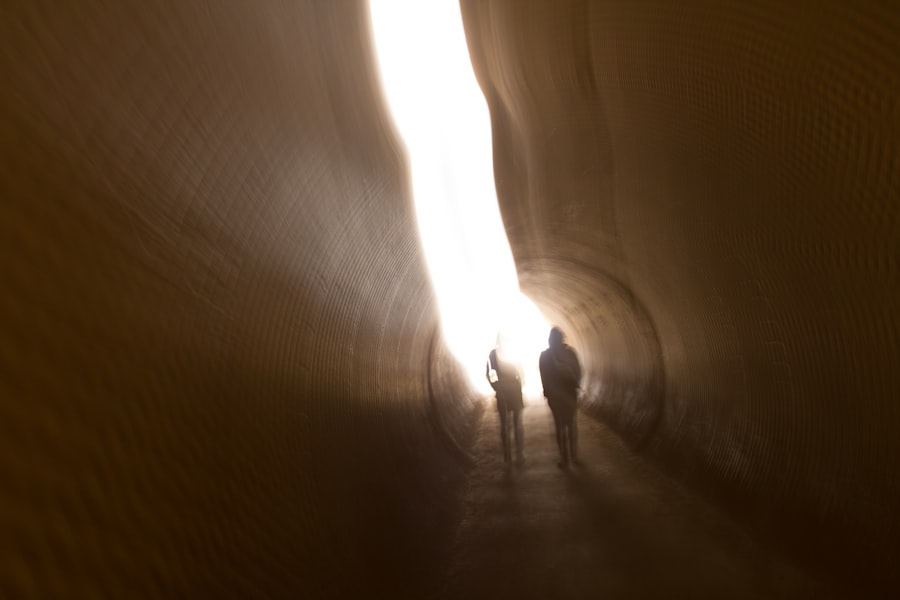The Drake Passage, a body of water that separates South America from Antarctica, is renowned for its tumultuous seas and breathtaking vistas. Named after the English explorer Sir Francis Drake, who navigated these waters in the late 16th century, the passage has become a significant route for adventurers and researchers alike. Stretching approximately 600 miles, it is often described as one of the most challenging maritime routes in the world.
The passage serves as a gateway to the Antarctic region, drawing countless travelers eager to experience its unique blend of natural beauty and perilous conditions. The allure of the Drake Passage lies not only in its geographical significance but also in its rich history and ecological importance. It is a vital corridor for ocean currents and marine life, playing a crucial role in the global climate system.
For those who dare to traverse its waters, the Drake Passage offers an unparalleled opportunity to witness the raw power of nature, as well as the chance to explore some of the most remote and pristine environments on Earth. As adventurers prepare to embark on this journey, they are often filled with a mix of excitement and trepidation, knowing that they are about to confront one of nature’s most formidable challenges.
Key Takeaways
- The Drake Passage is a treacherous body of water located between South America’s Cape Horn and the South Shetland Islands of Antarctica.
- Navigating the Drake Passage presents challenges such as strong winds, rough seas, and unpredictable weather conditions.
- Adventurers should prepare for the journey by packing appropriate gear, taking seasickness medication, and mentally preparing for the rough conditions.
- Safety measures for crossing the Drake Passage include wearing a life jacket, staying informed about weather updates, and following the instructions of experienced crew members.
- The Drake Passage is home to diverse wildlife such as whales, seals, and seabirds, as well as natural wonders like icebergs and stunning landscapes.
Understanding the Challenges of Navigating the Drake Passage
Navigating the Drake Passage is not for the faint of heart. The waters are notorious for their unpredictable weather patterns and rough seas, which can turn calm conditions into violent storms within minutes. The convergence of the Atlantic and Pacific Oceans creates a unique set of challenges, including strong currents and high waves that can reach heights of over 30 feet.
Mariners must be well-prepared to face these conditions, as even experienced sailors can find themselves at the mercy of the elements. In addition to the physical challenges posed by the sea, there are also psychological hurdles that adventurers must overcome. The isolation of the passage can be daunting, with vast stretches of open water and limited visibility.
This sense of remoteness can lead to feelings of vulnerability, especially for those who are unaccustomed to such extreme environments. However, for many, this isolation is part of the appeal; it offers a chance to disconnect from the modern world and immerse oneself in nature’s grandeur.
Preparing for the Journey: Tips for Adventurers

Preparation is key for anyone planning to cross the Drake Passage. Adventurers should begin by researching their options thoroughly, whether they choose to sail on a small expedition vessel or join a larger cruise ship. Each option comes with its own set of advantages and challenges, so understanding personal preferences and comfort levels is essential.
It is advisable to book trips with reputable companies that have experience navigating these waters, as they will be better equipped to handle unexpected situations. Packing appropriately is another critical aspect of preparation. The weather in the Drake Passage can be highly variable, so layering clothing is essential.
Adventurers should bring waterproof gear, sturdy footwear, and warm layers to ensure comfort during their journey. Additionally, seasickness can be a common issue due to the rough waters; therefore, travelers should consider bringing motion sickness medication or natural remedies to alleviate discomfort. Mental preparation is equally important; understanding that conditions may be challenging can help adventurers maintain a positive mindset throughout their journey.
Safety Measures and Precautions for Crossing the Drake Passage
| Precaution | Description |
|---|---|
| Life Jackets | All passengers are required to wear life jackets during the crossing. |
| Emergency Drills | Crew conducts emergency drills to prepare passengers for potential emergencies. |
| Weather Monitoring | Captain and crew monitor weather conditions to ensure safe passage. |
| Medical Staff | Medical professionals are available on board to attend to any health concerns. |
| Secure Belongings | Passengers are advised to secure their belongings to prevent accidents during rough seas. |
Safety should always be a top priority when crossing the Drake Passage. Adventurers must familiarize themselves with safety protocols and emergency procedures before setting sail. This includes understanding how to use life jackets, lifeboats, and other safety equipment onboard.
It is also crucial to pay attention during safety briefings provided by crew members, as they will offer valuable information about navigating potential hazards. In addition to onboard safety measures, travelers should also consider their physical health before embarking on this journey. Those with pre-existing medical conditions or concerns should consult with a healthcare professional to ensure they are fit for travel in such challenging conditions.
Carrying a well-stocked first aid kit can also provide peace of mind, as it allows adventurers to address minor injuries or ailments that may arise during their voyage.
Wildlife and Natural Wonders of the Drake Passage
One of the most captivating aspects of crossing the Drake Passage is the opportunity to encounter diverse wildlife and stunning natural wonders. The waters are teeming with marine life, including whales, seals, and various species of seabirds. Adventurers may have the chance to spot majestic humpback whales breaching the surface or playful sea lions basking on ice floes.
Birdwatchers will delight in observing albatrosses gliding gracefully above the waves, their wingspans reaching up to 12 feet. The natural beauty of the Drake Passage extends beyond its wildlife. The dramatic landscapes of nearby islands and icebergs create a breathtaking backdrop for any journey through these waters.
Glacial formations and towering cliffs provide a stark contrast to the deep blue sea, while icebergs in various shapes and sizes float serenely by. For many travelers, these sights are not just highlights of their journey; they are transformative experiences that foster a deeper appreciation for the planet’s natural wonders.
Weather and Climate Considerations for Crossing the Drake Passage

The weather in the Drake Passage is notoriously unpredictable, making it essential for adventurers to stay informed about current conditions before setting sail. The region experiences frequent storms and rapidly changing weather patterns due to its location at the convergence of two major ocean currents. Travelers should be prepared for everything from sunny skies to heavy rain and strong winds within a single day.
Understanding seasonal variations can also aid in planning a successful crossing. The summer months (November to March) generally offer milder weather and calmer seas, making this period more favorable for navigation. However, even during these months, conditions can change quickly, so adventurers must remain vigilant and adaptable throughout their journey.
By keeping an eye on weather forecasts and being prepared for sudden shifts in conditions, travelers can enhance their chances of a safe and enjoyable crossing.
Navigational Techniques for Sailing the Drake Passage
Navigating the Drake Passage requires skillful seamanship and an understanding of various navigational techniques. Experienced sailors often rely on traditional methods such as celestial navigation alongside modern technology like GPS systems and radar. Familiarity with nautical charts is crucial, as they provide essential information about water depths, currents, and potential hazards along the route.
Understanding wave patterns, wind direction, and weather changes can significantly impact navigation decisions. For those new to sailing in challenging waters like the Drake Passage, seeking guidance from seasoned captains or taking sailing courses can be invaluable in building confidence and competence on the open sea.
Historical Significance of the Drake Passage
The historical significance of the Drake Passage cannot be overstated. It has long been a critical route for explorers seeking to uncover new territories and trade routes. Sir Francis Drake’s expedition in 1578 marked one of the first recorded crossings of these treacherous waters, paving the way for future explorers who would follow in his wake.
Over the centuries, countless adventurers have braved its challenges in pursuit of discovery and knowledge. In addition to its role in exploration, the Drake Passage has also been pivotal in scientific research related to climate change and marine ecosystems. Researchers study ocean currents and marine life in this region to better understand global climate patterns and their implications for biodiversity.
The passage serves as a living laboratory where scientists can observe firsthand how environmental changes impact both marine ecosystems and human activities.
Popular Routes and Destinations in the Drake Passage
Several popular routes traverse the Drake Passage, each offering unique experiences for travelers. One common route connects Ushuaia, Argentina—the southernmost city in the world—to various destinations in Antarctica. This journey typically takes adventurers through some of the most stunning landscapes on Earth while providing opportunities for wildlife encounters along the way.
Another popular option includes cruises that explore nearby islands such as Deception Island or Half Moon Island. These excursions allow travelers to experience not only the beauty of the passage but also its rich history—many islands have remnants of early whaling stations or research bases that tell stories of human endeavor in this remote region. Each route offers its own set of adventures and discoveries, ensuring that no two journeys through the Drake Passage are ever alike.
Stories and Adventures of Crossing the Drake Passage
The tales of those who have crossed the Drake Passage are often filled with excitement, challenges, and unforgettable moments. Many adventurers recount experiences of battling fierce storms while marveling at breathtaking sunsets over turbulent waters. Some share stories of close encounters with wildlife—like witnessing a pod of orcas swimming alongside their vessel or spotting a solitary penguin on an iceberg.
The challenges faced while navigating these waters often lead to lasting friendships forged through adversity—a testament to the spirit of adventure that defines those who dare to cross this formidable passage.
The Thrill of Conquering the Drake Passage
Conquering the Drake Passage is an experience unlike any other—a thrilling adventure that tests both physical endurance and mental fortitude. For those who embark on this journey, it represents not just a crossing but an opportunity for personal growth and discovery amidst some of nature’s most awe-inspiring landscapes. The challenges faced along the way serve as reminders of humanity’s resilience in confronting nature’s might.
As adventurers return from their voyages across these storied waters, they carry with them not only memories but also newfound perspectives on life and nature’s grandeur. The thrill of navigating one of the world’s most challenging maritime routes leaves an indelible mark on their souls—a testament to their courage and spirit of exploration that will inspire future generations to seek out their own adventures across this remarkable passage.
Navigating the Drake Passage is often considered one of the most challenging maritime routes due to its unpredictable weather and turbulent waters. For those interested in learning more about the experiences and challenges faced by explorers and travelers in this region, a related article can be found on MyGeoQuest. This article delves into the historical significance and the modern-day adventures associated with crossing this infamous stretch of water. To explore this topic further, you can read more by visiting this article on MyGeoQuest.
WATCH HERE: Drake Passage: Earth’s Deadliest Waters Revealed
FAQs
What is the Drake Passage?
The Drake Passage is the body of water between the southern tip of South America and the northern tip of the Antarctic Peninsula. It is known for its rough seas and challenging sailing conditions.
Why is the Drake Passage considered difficult to navigate?
The Drake Passage is known for its strong winds, large waves, and unpredictable weather. These conditions make it one of the most challenging and dangerous stretches of water for sailors to navigate.
What is the best time of year to travel through the Drake Passage?
The best time to travel through the Drake Passage is during the austral summer, which runs from November to March. During this time, the weather is relatively milder and there is less chance of encountering severe storms.
What are the main attractions of traveling through the Drake Passage?
Traveling through the Drake Passage offers the opportunity to see diverse wildlife, including penguins, seals, and various species of seabirds. It also provides stunning views of icebergs and the Antarctic landscape.
What are some safety precautions to take when traveling through the Drake Passage?
When traveling through the Drake Passage, it is important to be prepared for rough seas and adverse weather conditions. It is advisable to travel with an experienced crew and ensure that the vessel is well-equipped for the journey. Additionally, it is recommended to have proper safety gear and emergency plans in place.
